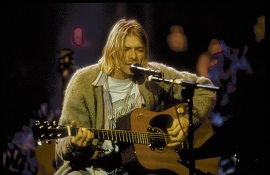
1993 was a pretty great year. Most of the Class of 2016 was born then. But even taking that into consideration, it was a pretty great year. Take a look at what our contributors have to say about the very best in art, literature, film and music from twenty-one trips around the sun ago.
The Original Humans of New York: The ‘93 Whitney Biennial
by silviana ilcus
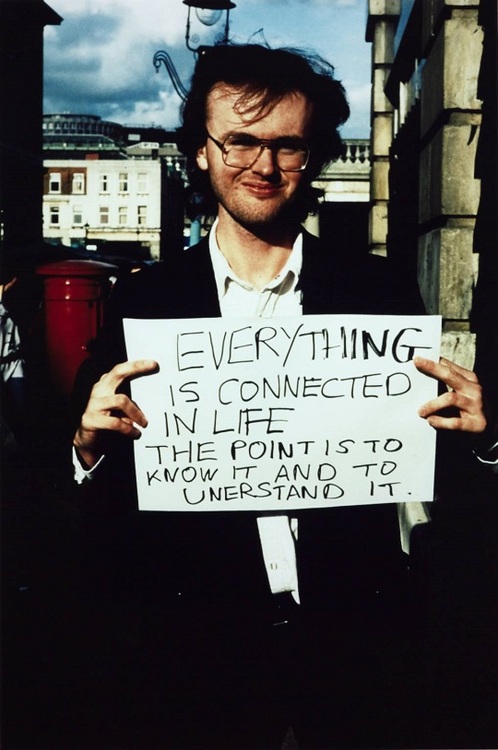
1993 was a pivotal year in the art world. So much, that the New Museum in New York decided to dedicate a whole exhibition to it a mere few months ago; the museum’s associate curator, Jenny Moore, sees ’93 as a “touchstone flashpoint year”. That year, the Whitney Biennial consisted mostly of installations for the first time, making “fault lines open up and the ground shift” to paraphrase New York Magazine’s Jerry Saltz. Among the pieces were the controversial exhibition’s admission button reading I CAN’T IMAGINE EVER WANTING TO BE WHITE, by Daniel J. Martinez, and Charles Ray’s “Family Romance,” which presented four nude chest-height family members holding hands. That year, artists started addressing the prevalent AIDS crisis. Nan Golding debuted Gilles and Gotscho, a series of photographs narrating the relationship between an artist and his lover, from moments in which the two were in relatively good health yet aware of their diagnosis, to Gotscho kissing deceased Gilles.
In 1993, English photographer and video artist Gillian Wearing exhibited the results of her exploring the contrast between the façade we put up and our real selves. She engaged with this topic by asking passersby on the streets of Brixton (South West London) to write whatever they wanted on a piece of white cardboard, and taking their photographs with this card. She called the series Signs that say what you want them to say and not Signs that say what someone else wants you to say, but it might as well have been named Humans of London; the similarities with the more recent Humans of New York are striking. Having lived in Britain, I testify that the UK tends to applaud one’s being reserved; more private matters are only disclosed to close friends, and a well-composed image tends to be kept up in public. Through her novel social experiment, Gillian Wearing gave people the opportunity to momentarily evade their society’s cultural norm. Her photography series features profound contrast between images and words; a suited-up well put-together young man states “I’M DESPERATE”, a policeman is holding a sign saying “HELP”, while a young woman’s calm smile contrasts with her affirming “MY GRIP ON LIFE IS RATHER LOOSE!”.
Through Signs that say, Gillian Wearing provided a post-modernist reinterpretation of Dutch 17th century genre paintings, in an attempt to get a glimpse of the inner life of Brixton’s passersby similar to the Dutch artists’ aiming to present the life of the real Dutchman. Yet unlike Dutch genre painting and Humans of New York, which expose the lives of the featured characters in greater detail, Wearing’s photography series limits the disclosure to what can fit on a piece of cardboard. This makes Signs that say more twangy, yet equally poignant, which is exactly what helped Gillian Wearing successfully plant the seed for contemporary art’s exploring what lies beyond people’s façade.
—————————————————————————————————————————————-
Sensible English: Trainspotting
by marie vachovsky
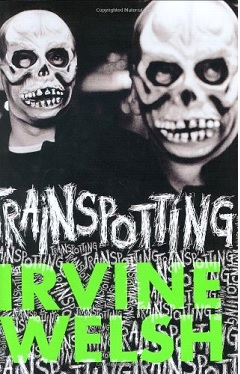
Many of us know Trainspotting by that Tumblr gif where that girl calls Iggy Pop “Ziggy Pop.” But before it was a Tumblr gif, it was a movie where Ewan McGregor wears really tight shirts and actually stays Scottish. And before it was a movie, it was Irvine Welsh’s first novel, a Robert Burns-style dialected depiction of the deadbeats of late 80’s Scotland.
Trainspotting as a novel hits hard and fast (partially because of the constant reiteration of cunt, fuck, and some exclusively Scottish swears), twisting its reader through the convoluted backstreets of Edinburgh and its various heroin-addled citizens. Disgustingly funny, intensely cathartic, and painfully isolating, Trainspotting smothers with a sense of constant alienation under the guise of amusing surface-level actions (like BB-gunning dogs at the park), and like so ultimately offers a critique of our society’s overuse of escapism in the face of fundamental discontent.
Trainspotting speaks through the perspective of ‘ol Renton, our cynical protagonist, and takes us through his numerous off-the-wagon on-the-wagon excursions, all while his friends (rather, quasi-friends) self-implode around him. A few choice figures include the sociopath Franco, who threatens his friends into staying friends into him, Sick Boy who’ll steal your girl in a second, Spud the naïve, and, of course, that girl that calls Iggy Pop Ziggy Pop.
And we kind of become Renton, because, to some degree, we all want new friends, new sex, and a new life. So, as Renton becomes increasingly more self-aware of the discrepancy between his current life and the life he is capable of, we make a similar comparison to our own lives versus potential lives. Which, to be honest, can get pretty painful, because self-awareness is always a bit painful, but, you know, it’s necessary, and you might as well get it through a Scottish accent.
But for us ‘Mericans, that Scottish syntax don’t exactly come naturally. In fact, it takes a good chapter of getting used to. But eventually, you’ll learn to phonetically sound the words out, associate “ken” with “you know,” and it’ll warp to some form of sensible English, ken?
—————————————————————————————————————————————-
Food and Emotion: Like Water for Chocolate
by adam bowles
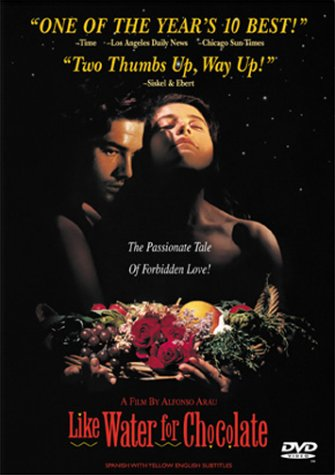
1993 wasn’t the best year for film. Every year has at least a few spectacular films, and sure,’93 is no exception—Steven Spielberg released Schindler’s List; Holly Hunter and Anna Paquin both claimed Oscars for their performances in The Piano; and Bill Murray experienced an unforgettable case of déjà vu in Groundhog Day. The standout films of 1993 are all undeniably great, and as a reviewer in 2014, that equates to boring. What could I say about Schindler’s List in 2014 that hasn’t already been said (more eloquently, I’m sure) by scores of film critics? Not much. So for this week’s #tbt, I looked beyond American cinema in search of something a little less, uh, canonical.
Of course, that’s not to say that the film I chose—Como Agua Para Chocolate, a fantastic Mexican drama—wasn’t well-reviewed. Indeed, the film was widely lauded by critics when it premiered in Mexico in 1992 (luckily for me, the film didn’t reach American audiences until ’93). The film is an adaptation of Laura Esquivel’s popular 1989 novel of the same name. The title, which translates to “like water for chocolate,” is a double entendre that plays off of a popular Spanish idiom that roughly means ‘to be passionate, or to have intensity of feeling.’ The meaning is derived from the boiling-hot temperature of water used to make hot chocolate. For example, a person may be “like water for chocolate” if they are caught in a boiling rage, or if they have steamy sexual desires.
The second meaning of the title is more literal; this is a film about food—not regular food, but magical food. In a style similar to that of Gabriel Garcia Marquez, Esquivel infuses her realistic stories with the magic realism of folklore. The first hints of magic come early in the film. In the beginning scene, a pregnant woman is chopping onions. The smell of the onions is so strong that her unborn child cries a river of tears from within the womb and splashes out onto the kitchen table. The newborn baby girl is Tita, the film’s central character.
We soon learn that Tita is a disappointment to her mother, who wanted a son. She grows up in the care of Nacha, her loving nurse and the house cook. Later, when Tita falls in love with a handsome suitor and he asks for her hand in marriage, Tita’s mother forbids her from ever marrying, citing a family tradition that says the youngest daughter must take care of her mother until her mother dies. Tita’s mother then cruelly orders that Tita’s older sister to marry Pedro, the man Tita loves. For the ceremony, Tita is tasked with preparing the wedding cake. She cries into the cake batter, and later everyone who eats the cake experiences “a strange intoxication” involving longing for true love, crying, and vomiting. This is how Tita discovers that she can bake her emotions into her food. I won’t include more examples of Tita’s skill for fear of spoiling the plot, but I will say that Tita’s emotions run the gamut from heartbreak, to happiness, to intense lust. The effects of her food on those who eat it are both amusing and disturbing.
Tita’s cooking becomes the way she surreptitiously communicates with Pedro, her forbidden love. The film follows Tita through her life as her and Pedro attempt to surmount the obstacles to their love. Along the way there are tears, bloodshed, laughs, and (most memorably) a death by orgasm. Every scene, especially the ones involving food, is beautifully shot. Point is, this movie’s got a lot going on. Thank you, Mexico, for adding some spice to 1993’s unremarkable lot of major releases.
—————————————————————————————————————————————-
Space Jamz: Shaq Diesel
by managing editor alec arceneaux
1993 is probably more associated with the peak of grunge and alt rock’s domination, seeing Nirvana’s In Utero, Pearl Jam’s Vs., Smashing Pumpkins’ Siamese Dream, Liz Phair’s Exile in Guyville, and Blur’s Modern Life is Rubbish. But so many exciting things happened! Prince changed his name to a symbol. Michael Jackson both played at the Super Bowl and was accused of child molestation. Rick Astley retired (happy 46th birthday by the way, champ). The Bodyguard‘s soundtrack became the first album ever to sell a million copies in a week. Wu-Tang Clan’s debut Enter the 36 Chambers and A Tribe Called Quest’s timeless Midnight Marauders came out on the same day. Even more significantly, Raven-Symone, Billy Ray Cyrus, and the Flaming Lips’ albums all came out on the same day. Kurt Cobain, Eddie Vedder, Tupac, and Snoop Dogg were all arrested. Gangsta rap was taking over from Golden Age hip-hop, with Dre’s The Chronic and Snoop’s Doggystyle dominating over albums by De La Soul, A Tribe Called Quest and Leaders of the New School.
With all this excitement, it’s easy to forget about an album that didn’t turn out to be very influential, and whose artist soon moved on to bigger things. Though it went platinum, that was mostly off of star power. He was trapped in a style that would fall by the wayside, a flow reminiscent of the Fresh Prince or LL Cool J. Many people didn’t think the album was serious. But it was. And it’s so good.
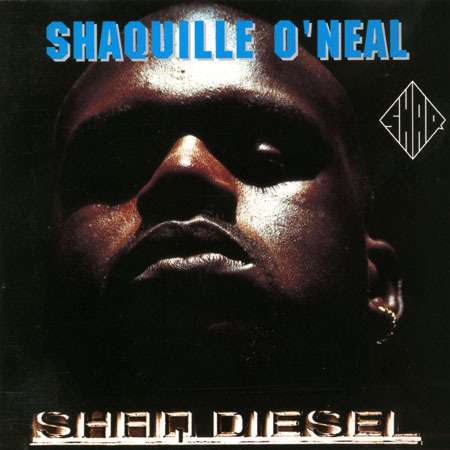
October 26th, 1993, coming off of his NBA Rookie of the Year season, Shaquille O’Neal, center for the Orlando Magic, gave the world Shaq Diesel. And lo, he saw that it was outstanding.
I like to think of myself as somewhat of a collector of terrible hip-hop. I have two albums by the guy that did “Lean Like A Cholo.” So when I saw an album by Shaq while record-shopping in my sophomore year of high school, I was overjoyed. I didn’t even know he rapped. I thought this would be cringe-inducingly bad. How wrong I was. And how foolish to doubt. Shaq’s style isn’t based on complex lyrical wordplay. But, as anyone who watches TNT’s Inside the NBA knows, the Big Aristotle has enough charisma to sell toothpaste to a Brit (can I say that? I speak English, I don’t think it’s racist). His rhymes are almost entirely boasts about his athletic prowess, which he would back up over a 17-year NBA career. Imagine Richard Sherman’s rap album. I don’t think I need to sell this any more.
Do yourself a favor and listen to Shaq Diesel, and marvel at the fact that the NBA’s sixth highest-scoring player and commercial actor extraordinaire is also somehow blessed with a silver tongue and ear for beats. Some people truly have all the luck.
